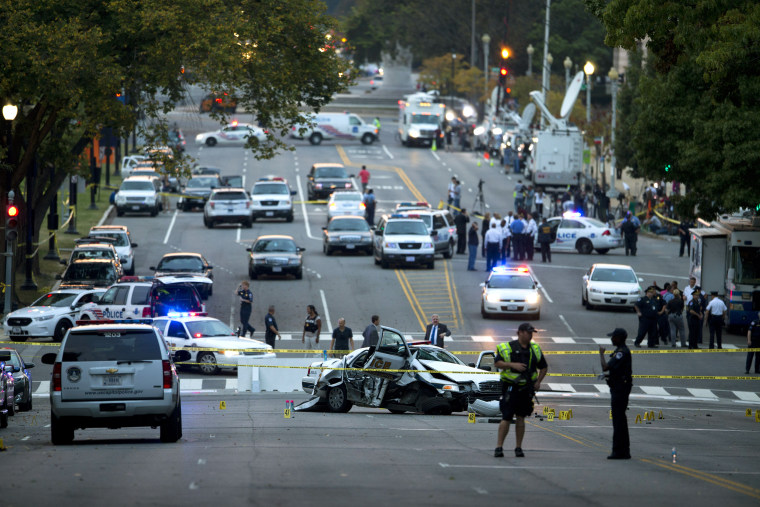Authorities continue to piece together possible motives after a woman was shot and killed by police for attempting to breach the White House security gate Thursday.
Miriam Carey, a 34-year-old dental hygienist from Stamford, Conn., was believed to be suffering from mental health problems when she led police on a 12-block car chase from the White House to Capitol Hill, law enforcement officials told NBC.
According to NBC, investigators gather that Carey may have thought President Barack Obama was stalking her.
The Capitol, caught in a government shutdown, was on edge for the second time in just over two weeks since the deadly shooting rampage that left 12 dead at the nearby Washington, D.C., Navy Yard.
An 18-month-old child, believed to be Carey's daughter, was in the car during the episode. The girl was taken to the hospital after the scene and was found unharmed. The child is now in protective custody.
- Miriam Carey (Courtesy of Advanced Periodontics)
New details of the Carey's personal life are starting to unfold as investigators begin piecing together a possible motive. In an NBC Connecticut interview with Carey's former employer, Dr. Barry Weiss, a dentist, said that Carey "could be a bit rough" and was fired in August 2012. Months earlier in January, she suffered a fall and missed two to three weeks of work. And according to relatives interviewed by law enforcement officials, Carey suffered postpartum depression.
The Washington police department has begun an investigation into whether Capitol Police and Secret Service officers involved in the shooting complied with their agency's policies on the use of deadly force, law enforcement officials said Friday. The police department's internal affairs division will conduct the probe and the Secret Service's Office of Professional Responsibility will "monitor" it as it relates to its agency's officers, officials told NBC's Michael Isikoff. A Capitol Police spokeswoman did not respond to requests for comment.
The car chase began just shortly after 2 p.m. on Thursday when Carey hit a White House security fence with her car. Law enforcement officials say a total of 26 shots were fired by both Secret Service and Capitol Police officers as they pursued and tried to stop Carey, who was unarmed, in her black Infinity Sedan as she approached the Capitol. She was stopped by police and Secret Service at the foot of the Capitol when she bailed from her car. The cops opened fire, and she died a short time later.
Most law enforcement agencies allow the use of deadly force only when officers have reason to believe that they are threatened by death or serious physical injury. "There are definitely some major questions here," said Eugene O'Donnell, a professor of law at John Jay College, who has studied the issue of the use of deadly force. Among the key ones, he said, were what the officers believed the threat posed by Carey was at the time they fired the shots and whether they were influenced by police radio transmissions reporting that there were "shots fired," causing them to conclude, wrongly, that Carey was the shooter.
Still, O'Donnell noted that both the Secret Service and Capitol Police have special missions to protect the president and members of Congress that give them more latitude in the use of deadly force than average police officers-- and D.C. police chief Cathy Lanier has already said the officers involved 'acted heroically."
The protocols for both the Secret Service and the Capitol Police are not public, officials said.
Two law enforcement vehicles were struck during the high-speed car chase. A helicopter arrived at the scene to lift away at least one Capitol Police officer to a nearby hospital. The officer was later released Thursday evening.
NBC's Pete Williams and Erin McClam contributed reporting to this article.
